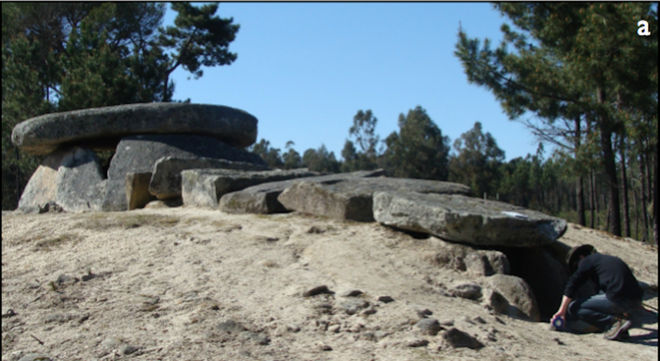
Dolmen da Orca, one of a cluster of stone tombs in Carregal do Sal, Portugal. PHOTO: F. Silva
It is well documented that the ancient built massive stone structures to honor their dead, but new research says some of the funeral sites may have also served as windows to the stars, according to Live Science.
The researchers findings were presented at the Royal Astronomical Society’s (RAS) National Astronomy Meeting 2016 in Nottingham, in the United Kingdom in a special session on how cultures and societies were influenced by stargazing.
The research focused on so-called “passage graves,” a certain type of tomb that consisted of a large funerary chamber with a long, narrow tunnel as the entry passage to the chamber. Previous research has shown that some of these type graves align with the positions of certain stars in the evening and morning skies, that could have been difficult to spot with the naked eye on the surface of the planet.
The team speculates the ancient stargazers would spend the night in the tomb area, while their eyesight adjusted to the lack of natural light, except what was provided but the view through the tunnel.
Daniel Brown, a senior lecturer in astronomy at Nottingham Trent University in the United Kingdom and organizer of the RAS session, said, “The entrance creates an aperture as large as 10 degrees through which your naked-eye view is restricted. This would allow enhanced observing, especially in the twilight hours of dusk and dawn.”
The restricted field of view would focus the observer’s eyes on the horizon, and possibly enable them to detect the faint stars, by limiting the amount of light that would normally wash out the darkened sky.
According to Brown, most passage graves have been found in Western Europe, and date from around 6000 BC to 2000 BC. Different regions had their own variations, he continued.
“In most circumstances, the evidence suggests the inner megalithic chamber(s) were used for burials or bone deposition, whereas outer courts might have been used for more communal practices — possibly related to the funerary rites.”
Brown speculated that the ancients may have used the appearance of certain heavenly bodies to make decisions about migrations in search of food or hunting grounds. He adds the investigations allow us to better understand how these observers understood the world around them.

Leave a Reply